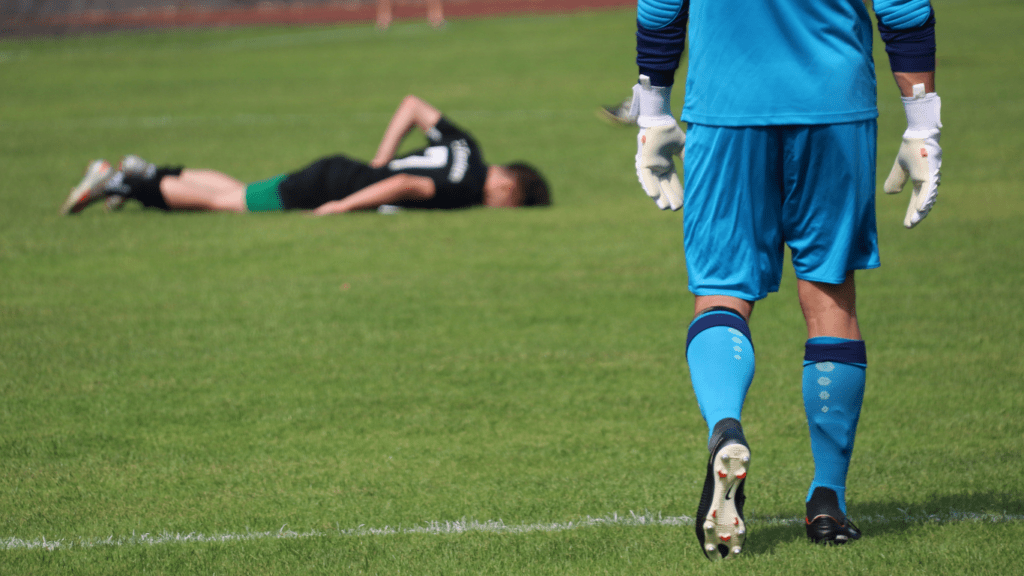As a football enthusiast, I’ve always been fascinated by the impact injuries can have on the performance of top European clubs. In this article, we’ll delve into the current injury report and analyze how these major absences are shaping the landscape of European football.
From key players sidelined with long-term injuries to last-minute setbacks before crucial matches, the unpredictability of injuries adds a layer of complexity to the game. With top clubs vying for titles and trophies, the absence of star players due to injuries can significantly alter team dynamics and influence match outcomes.
Whether it’s a striker with a goal-scoring record or a defender known for their solid backline presence, every absence has a ripple effect on the team’s performance. Join me as we explore the latest injury updates and unravel the intricate ways in which major absences are reshaping the competitive environment of top European clubs.
Impact of Key Player Absences on European Clubs
- Analyzing the Impact: Key player absences have a profound impact on the performance of top European clubs. These absences disrupt team dynamics, affecting strategies and overall gameplay. The absence of star players can lead to a significant drop in a team’s performance and results.
- Ripple Effect on Team Dynamics: When key players are sidelined, it creates a ripple effect within the team. Other players may have to step up to fill the gap, which can alter the team’s style of play and cohesion on the field. This adjustment period can be challenging and impact the team’s consistency and ability to secure victories.
- Strategies and Tactics: Coaches often have to rethink their strategies and tactics when key players are absent. They may need to modify formations, adjust player roles, or implement new game plans to compensate for the missing player’s contributions. These tactical changes can disrupt the team’s rhythm and may take time to fully adapt to.
- Match Outcomes and League Standings: The absence of key players can directly influence match outcomes and league standings. Teams may struggle to secure wins or drop points in crucial matches due to the lack of their star players. This can have a domino effect on the team’s position in the league table and their pursuit of titles and trophies.
- Pressure and Expectations: With key players missing, there is added pressure on the remaining squad members to deliver results. Fans, club management, and stakeholders place high expectations on the team, despite the absences. This pressure can create a challenging environment for the team to perform at their best consistently.
The impact of key player absences on European clubs cannot be underestimated. These absences have far-reaching effects on team dynamics, strategies, match outcomes, and overall league standing. Clubs must navigate through these challenges and find ways to adapt and thrive even in the absence of their star players.
Injury Concerns at Top European Football Clubs
Injuries at top European football clubs pose significant challenges that impact team dynamics and match outcomes. Key player absences due to long-term injuries or last-minute setbacks disrupt the rhythm and performance of these clubs, requiring adjustments in strategies and tactics to compensate for missing contributions.
Absences at FC Barcelona
At FC Barcelona, injuries to key players like Lionel Messi, Ansu Fati, and Gerard Piqué have presented major hurdles. These absences force the team to adapt its playing style and tactics, affecting both offensive and defensive strategies.
The absence of these star players puts pressure on the remaining squad members to fill the void and maintain the team’s competitive edge.
Absences at Real Madrid
Real Madrid is facing challenges with injuries to players such as Eden Hazard, Dani Carvajal, and Sergio Ramos. These absences impact the team’s attacking and defensive capabilities, requiring other players to step up and take on additional responsibilities.
The absence of these crucial players tests the depth of the squad and the adaptability of the team’s tactics under new leadership.
Absences at Manchester City
Manchester City is grappling with injuries to key players like Kevin De Bruyne, Aymeric Laporte, and Sergio Agüero. These absences disrupt the team’s midfield control, defensive solidity, and attacking prowess.
The team must adjust its formations and strategies to maintain its competitive position in the league and cope with the absence of these influential players.
Strategies to Mitigate Impact of Injuries
As I delve into strategies to mitigate the impact of injuries on top European football clubs, it’s clear that proactive measures are crucial to maintaining team performance amidst player absences. Implementing these strategies can help teams navigate challenges and sustain competitiveness throughout the season.
1. Squad Rotation:
Enhancing squad rotation is a fundamental strategy to reduce player fatigue and minimize the risk of injuries. By strategically rotating players in different positions and matches, teams can distribute physical strain more evenly across the squad, preventing overexertion and potential injuries.
2. Strength and Conditioning Programs:
Investing in comprehensive strength and conditioning programs is essential to improve players’ physical resilience and reduce susceptibility to injuries. Tailored training regimes focusing on injury prevention, muscle recovery, and overall fitness can enhance players’ durability and mitigate the impact of injuries.
3. Youth Development and Academy Integration:
Integrating young talents from youth academies into the first-team squad not only fosters a competitive environment but also provides additional depth to cope with injuries. Developing a pathway for young players to progress and seamlessly transition into senior levels enables clubs to maintain performance standards despite key player absences.
4. Strategic Transfer Policies:
Strategic transfer policies play a pivotal role in building a robust squad capable of withstanding injuries to key players. Smart recruitment strategies that consider injury history, versatility, and compatibility with the team’s style of play can bolster squad depth and ensure continuity in performance during challenging periods.
5. Sports Science and Data Analytics:
Utilizing sophisticated sports science technologies and data analytics can offer valuable insights into player health, workload management, and injury risk assessment. By leveraging data-driven approaches, clubs can proactively identify potential injury triggers, optimize training loads, and tailor individualized recovery plans to mitigate the impact of injuries effectively.
6. Psychological Support and Mental Resilience:
Providing psychological support and fostering mental resilience among players are integral aspects of injury mitigation strategies. Encouraging a positive mindset, building team cohesion, and offering mental health resources can help players cope with setbacks, maintain focus during recovery periods, and emerge stronger both physically and mentally.
By incorporating these proactive strategies into their operational frameworks, top European clubs can minimize the detrimental effects of injuries, sustain competitive performance levels, and navigate the challenges posed by player absences effectively.






